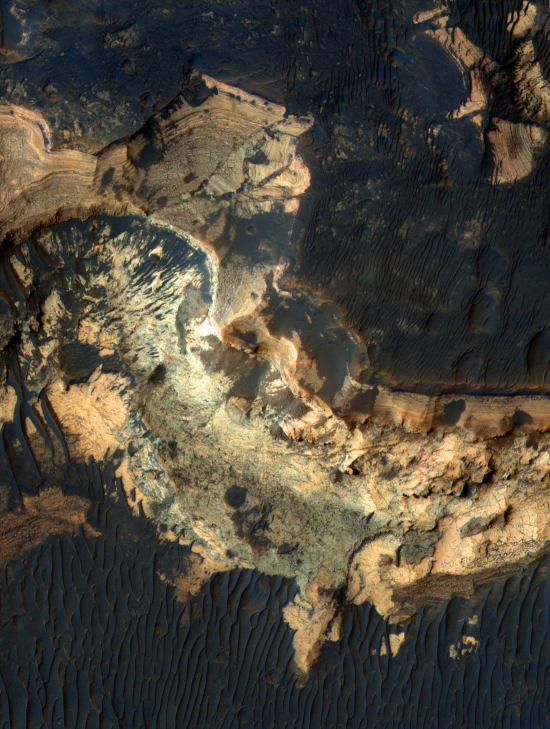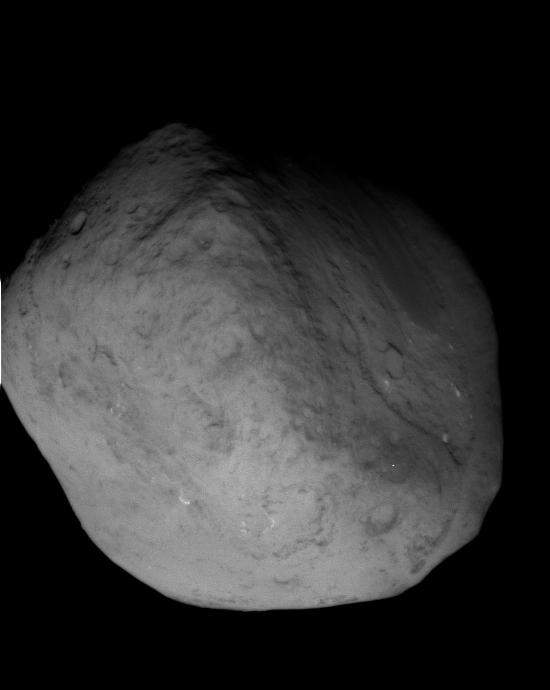China’s first probe to Mars is set for a November launch
The new colonial movement: China’s first probe to Mars is now set for a November launch.
The new colonial movement: China’s first probe to Mars is now set for a November launch.
The new colonial movement: China’s first probe to Mars is now set for a November launch.
In today’s listing of new science papers published by the American Geophysical Union, two papers illustrate quite clearly why the certainty of knowledge expressed by Presidential Science Advisor John Holdren in his testimony before Congress on Thursday is both mistaken and dangerous.
» Read more
Want to know whose getting what? The journal Science has put together this nice interactive table showing the various proposed budgets for the various science agencies in the federal government.
Though the magazine is undeniably pro-spending for science, the information is useful, as it shows clearly that even if every Republican cut is approved, the amount of money for most of these agencies will not be, on average, much different than what was spent in 2008. And it seems to me that in 2008 there was plenty of money for science in the federal government. Probably too much.
The mysterious swarm of earthquakes in Arkansas keep coming, including a 4.3 quake today.
The uncertainty of science: The discoverers of the possibly habitable exoplanet Gliese 581g defend their work against recent science attacks.
The following story is why the advocates of global warming are losing the debate: At House hearings yesterday, Obama’s science advisor John Holdren admitted that using the term “deniers” to describe scientists who had doubts about global warming is inappropriate. “It was not my intent to compare them to Holocaust deniers, and I regret it,” he replied. “In the future I will find other terms to use.”
Sounds good, doesn’t it? Shortly thereafter, however, during the same hearing, Holdren then said this about a list of 100 climate scientists [word file] who remain skeptical about global warming:
“I haven’t seen the list,” Holdren began. “But in the past, most of the names on such petitions have turned out not to be climate scientists, and one could assume that they had not spent much time reviewing the literature.”
Without any knowledge, he slams these scientists, accusing them of being ignorant of the science.
» Read more
According to its manager, the budget troubles of the James Webb Space Telescope will likely keep it on the ground until 2016.
This is terrible news for space-based astrophysics. Until Webb gets launched, NASA will have no money for any other space telescope project. And since all the space telescopes presently in orbit are not expected to be operating at the end of the decade, by 2020 the U.S. space astronomy program will essentially be dead.
Then again, there is the private sector, as Google Lunar X Prize is demonstrating.
How hibernating bears could help man get to Mars.
This week’s release of cool images from Mars Reconnaissance Orbiter included the color image below of a region on the floor of Holden Crater, one of the four possible landing sites for Curiosity, the Mars Science Laboratory planned for launch later this year. (If you want to see the entire image at higher resolution, you can download it here.)
Two things that immediately stand out about this image (other than this looks like an incredibly spectacular place to visit):

Arsenic, silicon, and alien life.
Steven Chu, Obama’s energy secretary, gave us his own version of a pig’s squeal yesterday.
The Google Lunar X Prize has announced the final roster of teams competing for its $30 Million prize.
Thousands of previously unknown ruins in Saudi Desert spotted from space.
Meanwhile, up on ISS two Russians have successfully completed a five hour spacewalk, getting all their work done early.
The computer has crushed the human champions in the second of three rounds of “Jeopardy!”
Wanna bet? A new study predicts the sea will rise by one meter by 2100.
How they come up with this number is a mystery to me, as every study I have read, including every IPCC report, says the sea has been rising about 1 to 2 millimeters per year for the last few centuries. At this rate, it will take between five hundred and a thousand years to get a rise of one meter.
More news from Stardust: scientists have now identified what they think is the crater produced by Deep Impact’s impact in 2005. Key quote:
The images revealed a 150-metre-wide crater at the Deep Impact collision point that was not present in 2005. The crater is a subtle feature in the images, but it appears consistently in multiple views from the spacecraft. “So I feel very confident that we did find the [impact] site,” said mission member Peter Schultz of Brown University in Providence, Rhode Island, at a press briefing on Tuesday. The crater’s features are “subdued” rather than sharply defined, like those of craters made in hard materials like rock. “The message is: This surface of the comet where we hit is very weak,” said Schultz. The crater also has a small mound in its middle, indicating that some of the material thrown up by the impact was drawn by the comet’s gravity back down into the crater, he said: “In a way, it partly buried itself.”
Researchers have discovered a new set of deep-sea volcanic vents in the south Pacific, suggesting these vents are more common than previously believed. Key quote:
Using an underwater camera system, the researchers saw slender mineral spires about 10 feet tall, with hot water gushing from their peaks, and white mats of bacteria coating their sides. The vents are at a depth of 1,706 feet in a newly discovered seafloor crater close to the South Sandwich Islands, a remote group of islands about 310 miles southeast of South Georgia.
The images from Stardust’s flyby of Comet Tempel 1 are now available. I think the image below is the best, as it shows many details of the presently inactive comet surface. Scientists will need a bit of time now to compare these features with those imaged during the flyby of Deep Impact back in 2005.

The sleepy kitten awakes! The Sun released its most powerful solar flare since 2006 last night.
Await the squeals from scientists: The journal Science notes the differences between the budget proposals coming from the House Republicans (cutting funds to science) and Obama (increasing funds to science) and hopes for the best. (You can also get a good idea about the increases to science that Obama proposes by going to this ScienceInsider story and scanning down the various articles.) Key quote:
Both conservatives and liberals agree: the main pressure pushing the federal deficit is entitlements; the discretionary budget is dwarfed by mandatory Medicare, Medicaid, and Social Security spending. And yet neither the House of Representatives Republican appropriators’ proposal to tackle the deficit starting in 2011 nor Obama’s new budget for next year tackles the real challenge of entitlements. Instead, both pick and choose the discretionary cuts they want to start with.
From my mind, we should accept the cuts from both sides, then go after the entitlements.
The first images from Stardust of Comet Tempel 1 have been released. More to come later today.
Update: some glitch is delaying the download of the images. Instead of arriving as programmed, they are arriving in the order taken.
How to watch Stardust’s Comet Tempel 1 flyby tonight.
While politicians argue budgets here on Earth, the NASA probe Stardust is zooming in on its flyby of Comet Tempel 1 tonight.
Astronauts on the Russian Mars500 simulated Mars mission simulated a Mars landing on Saturday. Key quote:
Three astronauts on the Mars500 simulated mission will make a simulated walk on the Mars “surface” Monday. After working 30 days on the simulated planet, the crew will then embark on a simulated 240-day return trip to Earth. Officials said the 520-day Mars500 mission is designed to test how humans cope with the physical and mental stresses of a long space flight.
The fungus that has been killing cave hibernating bats throughout the eastern United States has now been found in North Carolina.
In a related note, the National Speleological Society has sent a letter to the U.S. Fish and Wildlife Service, expressing its concern over what many cavers believe has been the government’s indiscriminate cave closure policies in response to the white nose fungus. Key quote:
Our members have been extremely patient and collaborative throughout the entire [white nose syndrome] situation, but the frustration and discontent has been growing. We are hearing more and more from across the country that cavers do not want to participate in collaborative efforts – in much part due to management decisions by federal and state agencies that are perceived by knowledgeable and conservation-minded cavers to be over-reactive, based on sometimes slim science, speculation and political pressure, and insensitive to broader science and conservation issues. That result would not be beneficial to anyone.
Fifteen ancient mysteries that aren’t so mysterious.